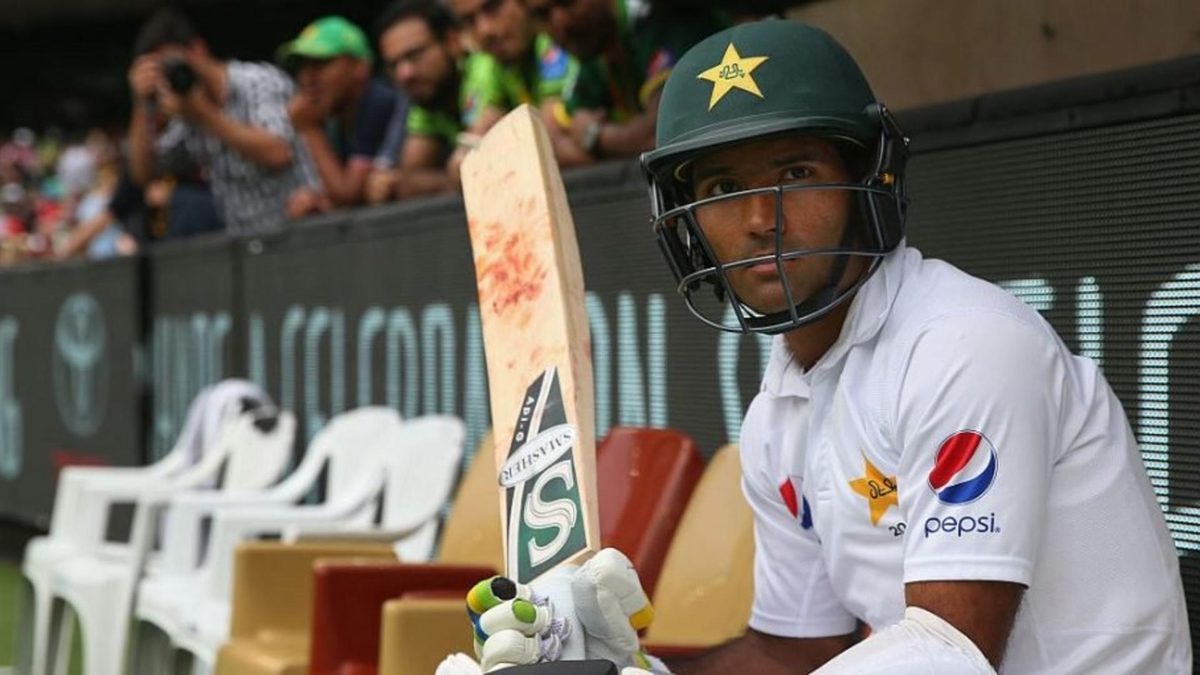
Asad Shafiq last turned out for Pakistan’s Test side in 2020, losing his national contract a year later to bring an anti-climactic halt to a journey that was impressive for the most part. Sarah Waris looks at where it went all wrong.
72 Test matches in a row since debut, the most ever for Pakistan: this statistical tidbit is all that’s needed to emphasise on Shafiq’s importance in Pakistan’s middle order. He scored 3,011 runs at No.6 for the team, 1,261 more than second-placed Asif Iqbal – the runs were always lurking around. Batting at a pivotal position, he ended with an average of 38.19 and 12 tons, carefully manoeuvring around with the tail, setting up games for Pakistan for the most part of the decade.
Shafiq first played for the international team in an ODI game against Bangladesh, making 17 in his first outing, before scoring two forty-plus scores on the tour to England in 2010. However, it was in the Test circuit where he found his real calling, the timelessness of the format pairing naturally with his patience and flair. Right from the very first match, he displayed that he belonged: a 118-ball 61 against South Africa helping Pakistan get to a first innings score of 434 after the Proteas had made 584-9d, eventually playing a big role as the match ended in a draw.
His second outing further confirmed his place in the XI, as Shafiq held the fort, scoring 83 off 202 balls in tough conditions in Hamilton, allowing Pakistan to take a lead of 92 runs against New Zealand. The ten-wicket win remains Pakistan’s last in the country.
His entire career was glittered with these moments, breaking away from the stereotype and excelling in away conditions. Seven of his 12 Test hundreds came out of Pakistan or the UAE, and he notched up 12 fifty-plus scores in SENA [South Africa, England, New Zealand, Australia] in 44 innings. He never went more than five innings without scoring at least a half-century in the four countries, making hundreds at Cape Town, The Oval and Brisbane, arguably some of the toughest venues for visiting batters.
His ton at Australia’s fortress Gabba in 2016, had the hosts perplexed, long before Rishabh Pant’s heroics took the show. Coming in at six, needing a mammoth, almost improbable 490 for a win, Shafiq let loose, shedding his usually conservative approach, scoring a hundred and then surging well past as Pakistan came 40 runs close to the target. Mitchell Starc, with the uncanny habit of producing magical deliveries, however, had other plans, bowling a brute of a delivery to Shafiq, with Pakistan falling short of what would have been their highest fourth-innings chase ever.
That game probably defines Shafiq’s career to perfection. Despite the sparks of brilliance, his overseas average reads 33.18, his overall average standing a notch above 38. He held the rivals by the scruff of the neck on most occasions, but never quite managed to grab on. 76 times in his Test career, he was out for a score of fewer than 40 – a whopping percentage of 59.38. The number increased following the departure of Misbah-ul-Haq and Younis Khan, probably the phase where Pakistan needed him to step up the most. He batted 35 times without either of the two, scoring less than 40 on 20 occasions, and averaging an underwhelming 35.11 without the two premier batters.
When Pakistan needed a trusted aide to raise his game in a period of transition, Shafiq fell short. While he did score 11 fifty-plus scores after their departure, the side probably needed him to not just be a contributor but take the centre stage. Without the cushion of experience around him, Shafiq arguably struggled to notch up consistent big scores, registering 12 single-digit figures in 35 innings following the retirements of Misbah and Younis.
By 2019, the Pakistan selectors went back to Mohammad Rizwan, picking him to play a Test match for the first time in three years. Having played one game in 2016, Rizwan, stood up to the challenge, averaging 40.40 in 2019 before bettering his run the next year, scoring 302 runs in five Tests at an average of 43.14.
There was also the case of Fawad Alam. Initially, there had remained a toss-up between Alam and Shafiq in the middle order, the latter edging ahead courtesy of the promise of his tough knocks in tougher conditions. Alam last played a Test in 2009, a year before Shafiq made his debut, the latter’s poise helping him get a longer run. By then, Alam, well in his 30s, had grown on to become a domestic titan, averaging over 50 in first-class cricket, probably knowing in his deepest of hearts that a comeback was all but over. It is then mighty poetic that Alam’s surprise call-up after 11 years – against England in 2020 – turned out to be Shafiq’s last series before he was axed.
Since then, Shafiq has returned to domestic cricket, piling on 1,023 runs in 15 matches with two hundreds and seven fifties at an average of 44.47 in the Quaid-e-Azam Trophy. However, his last hundred in the tournament came in 2020, and though he did register two fifties in the last season, he needs to do much more. In the Pakistan One Day Cup 2021/22, he was in fine form as well, scoring 510 runs at 102.00, including two hundreds, to end as the fifth-highest run-getter. He also plied his trade in USA’s Minor League, briefly turning out for Houston Hurricanes, but he still yearns for a Pakistan recall, recently saying: “If I am lucky, I will play for Pakistan again.”








